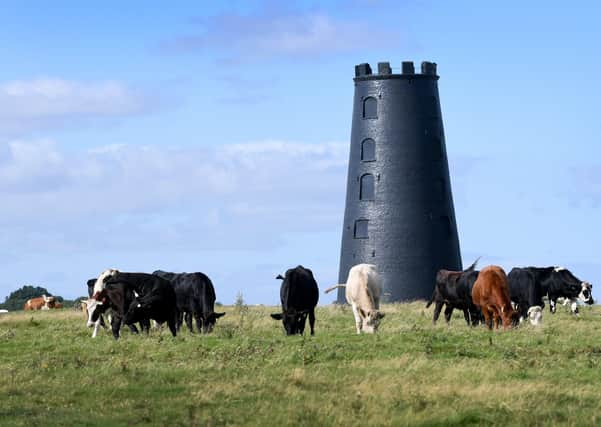The fascinating past of Beverley’s Black Mill


The town has one of the best areas of common land in the country, with the Westwood among several areas of land granted to locals by the Lord of the Manor way back in 1380, and today residents still hold rights to graze cattle and sheep in a practice overseen by so-called pasture makers.
The Black Mill itself has its own fascinating history.
According to East Ridings Museums, at the peak of agriculture in around 1850 Westwood had six working mills, five corn mills and one whiting mill.
Advertisement
Hide AdAdvertisement
Hide AdOriginally the exterior of the Black Mill was whitewashed but it was eventually tarred, leading to its new moniker.
It was damaged by a fire in 1868 and eventually all the timber parts and working gear were dismantled.
The mill was used as a dwelling until 1934 but now remains as a monument and something of a local landmark.
According to an East Ridings Museums exhibition on the Westwood, the site held a particular place in the hearts of local cricketers during the 19th Century.
Advertisement
Hide AdAdvertisement
Hide Ad“During the mid-Victorian times, cricket was an incredibly popular sport,” it said.
“The mills provided a meeting place, the most common being Black Mill. The miller would make it his responsibility to entertain and cater for the spectators. Pictures from the period often include social activity surrounding the mill.”
It became a Grade II listed building in 1987.
Pasture makers who manage the land around the mill are traditionally Freemen of Beverley but in 2010 with their numbers dwindling, new legislation was passed to allow more people to qualify as Freemen and help keep the Pasture Maker tradition alive.
Centuries have gone by since the area was first classified as common land but as other aspects of life has changed drastically, this corner of Yorkshire has remained reassuringly resistant.
Advertisement
Hide AdAdvertisement
Hide AdTechnical details: Nikon D5 camera, 70-200mm lens, 1/400th second at f8, ISO125. Picture by Simon Hulme.
Support The Yorkshire Post and become a subscriber today.
Your subscription will help us to continue to bring quality news to the people of Yorkshire. In return, you’ll see fewer ads on site, get free access to our app and receive exclusive members-only offers.
So, please - if you can - pay for our work. Just £5 per month is the starting point. If you think that which we are trying to achieve is worth more, you can pay us what you think we are worth. By doing so, you will be investing in something that is becoming increasingly rare. Independent journalism that cares less about right and left and more about right and wrong. Journalism you can trust.
Thank you
James Mitchinson
Comment Guidelines
National World encourages reader discussion on our stories. User feedback, insights and back-and-forth exchanges add a rich layer of context to reporting. Please review our Community Guidelines before commenting.